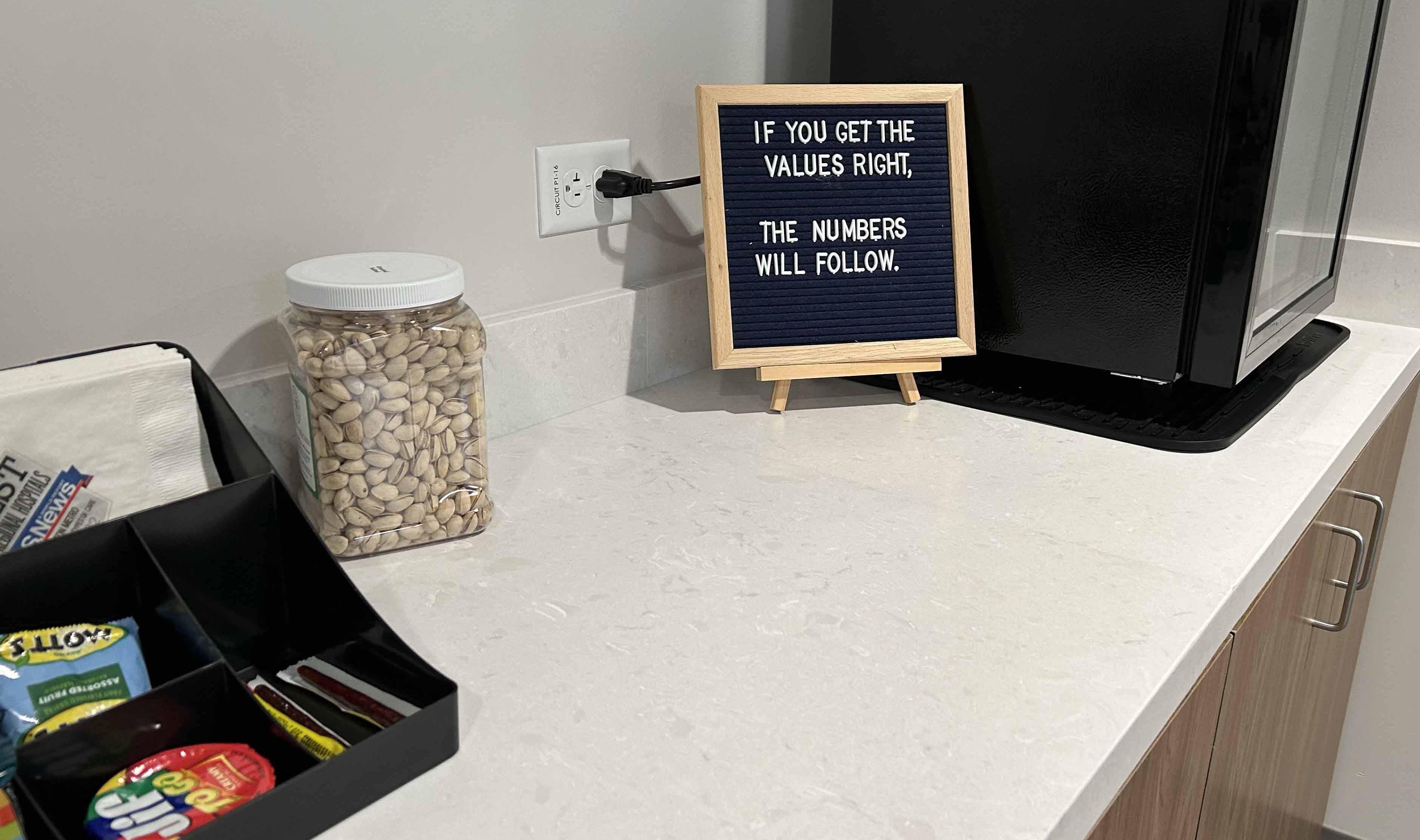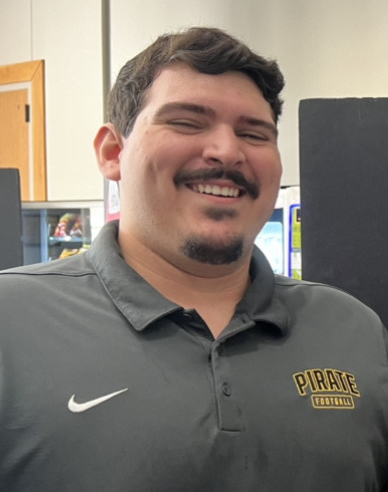
|
Where the Mission Meets the Margin
A Field Study of Organizational Communication at Houston Methodist Hospital |
     
|
|

|
Where the Mission Meets the Margin
A Field Study of Organizational Communication at Houston Methodist Hospital |
     
|
|
 |
Norberto (Tre) Flores is an incoming fourth-year student at Southwestern University in Georgetown, Texas. He is a Communications major with hopes of pursuing a career in Construction Project Management. Tre is twenty years of age, engages in various organizations on campus, and is a student-athlete. |
This essay is about organizational communication at both Houston Methodist Willowbrook (HMWB) and Houston Methodist Downtown (HMH). My main takeaway is that the Houston Methodist organization overall feels like one big puzzle. Seeing all the puzzle pieces individually helped me gain a greater appreciation of just how complex the puzzle is.
Marketing at Willowbrook
My classmates and I met with a couple of employees for the Marketing department but also got to meet with one of the higher-level employees in the department as they took us around their secluded section of the Willowbrook campus. They were in a separate building from the hospital, known as the Annex.
While meeting with these employees, we got to sit in and observe a meeting between the marketing department and a representative of a community newspaper to discuss potential media buying tactics. Having the opportunity to be a part of this meeting was remarkably interesting. Right before that meeting, the HMWB marketing employee we had met with was super nice and welcoming to my class. However, I felt that when the meeting with the guy from the newspaper started, they went directly into work mode with their game-face on. It was super interesting to see someone having casual conversations and interacting with people beforehand and then immediately switch to business mode. That was the first time I realized that we had gotten behind the scenes of the organization, getting to see how it operates in ways that most patients never see.
Projects that the marketing team had said they worked on consisted of banners being placed around the Willowbrook location, and the weekly newsletter known as the Willowbrook Weekly. Each of the marketing strategies that we were introduced to was simple, yet neither I nor my classmates had thought about them being used in a medical setting. For instance, one of the employees talked about how they do not put dates on the banners that are used for events or information. This is a frequent practice so that they do not have to make new ones every year and can put the budget towards other innovative ideas.
Overall, working with the Willowbrook marketing team was a wonderful experience, and they let us into their space with open arms. Considering that this was our second day on site, it was a great introduction to how the rest of the week-long observation would be.
Marketing at the HMH Sunset Location
While we were in Houston, we were able to take a trip downtown to the Houston Methodist Hospital (HMH) in the Medical Center, which was the headquarters of all the Houston Methodist Hospital locations. While we were there, we got to experience what marketing was like on the corporate side when we visited the corporate marketing team. We met with several of the staff from many of the departments. Similar to Willowbrook, the marketing department was located in a separate building from the main hospital. This location, however, was called "Sunset."
There, we saw how much goes into advertising and marketing for the brand. For instance, we met with an employee in the digital marketing area of the department, and they talked about how they would run different ads on different websites to see which one is more popular. This style of communication is unique as they are almost running tests on the consumer. With this they talked about "clicks." These clicks are important as it shows how many people are clicking on your advertisement from an electronic device, as well as advertising the hospital brand.
One idea that was shared between the Sunset and Willowbrook marketing departments was "Leading Medicine." This is an important aspect to Houston Methodist branding as they are a leading hospital in the country. The marketing team makes sure that the phrase is visible throughout the HM system and on all their marketing and advertisements to reinforce the hospital's reputation.
MITIE offices at HMH. Photo by Bob BednarResearch Institute at HMH
During our time at the Houston Medical Center, we were able to check out HM's research institute called MITIE. This institute was incredible to see. It had been built within the past decade (and was still under construction) and was filled with all sorts of medical technology that researchers can use to practice and operate as they develop innovations in technology and treatments.
When we were provided the opportunity to tour the facility, we were unexpectedly able to witness medical students practicing medical procedures on human cadavers. This experience was like nothing that I had ever experienced and was overwhelming at the same time. While it might be disturbing to some people, it was interesting to see how these medical practitioners were working on these bodies like it was no big deal and how they were effectively communicating with each other during the procedures. While I could not hear what was being said by the staff and instructors, they clearly understood each other, with very direct ways of commanding tools or objects. With a high-pressure environment comes high-pressure communication. This style of communication was effective in the practice area as most times when performing operations, you are under an enormous amount of pressure, as in some cases the patient's life is in the surgeon's hands. With an effective way to communicate, these practitioners are fully prepared to take on a task or a role that has been assigned to them to complete one goal.
The clear and specific forms of communication that we observed in the hospital and in each of the departments are a large piece of the puzzle when we are trying to put many different systems in place. This strategy is not only especially important in the medical field, but I believe in other professions as well. As I stated earlier, this certain type of discourse may not be practiced daily by the general population, but what matters is that all staff are on the same page and speak the same language every step of the way. This is primarily for the patient's care, as Houston Methodist talks about how patient care is the most important idea to them. With communication, staff can make sure that the patient is under the best care.
Overall, my time at HMH was well spent. From witnessing a cadaver that was being practiced on, to understanding medical discourse and communication strategies, it was interesting to learn about. We often see hospitals claim that the patient is the number one priority, but Houston Methodist lives this idea and genuinely cares for each patient.
Facilities at Willowbrook
On the second to last day, we returned to the Willowbrook location again and met with the Facilities team. This group seemed like they were pushed into a corner with how their office space is set up in the offstage part of the hospital. The employees under this department really care for the infrastructure of the hospital as they are the first ones to respond when the hospital is having maintenance issues. They described to my class and I that patient care is the number one priority, which was surprising to me because when people usually think of hospitals and patients, they think of the doctors and nurses directly caring for the patients, not the facilities people. This was interesting to listen to as the facilities department often flies under the radar for most visitors until something is broken. It was described to us by saying that if a toilet was not working that can lead a patient into thinking that the patient is not the number one priority, which will show up in the HCAHPS surveys. They clearly know that their job is important, because if something happens maintenance-wise, they are the first-person people who will call to get it fixed immediately. This gives the Facilities team a role in delivering on both the mission and the margin of the hospital.
One example of the "patients first" philosophy is that the air conditioning system is incredibly precise, where each room can be temperature controlled remotely by a computer. For instance, if the Facilities department got a call about a patient being too hot in their room, the facilities worker can manually change the temperature in that room remotely until the patient was satisfied. A part of their function is to make sure that the operating rooms are at the correct temperature to make sure the room does not become contaminated with bad air, germs, or other particles that could be harmful to a patient. This is an important procedure not only for the safety of the patient but for the staff at the hospital as well.
Houston Methodist has had this idea of patient care being their number one priority for a long time now, and we saw evidence of it in every department we visited. With systems like this, they show how much they care for their patients. This organization has thought of everything when it comes to patient care. This aspect of the organization amazes me as most hospitals in my area do not prioritize patient care. The local hospitals function with very minimal staff and limited resources. The standard that Houston Methodist holds all locations to is incredible. With separate locations around the Houston area to support the needs of many individuals, each one upholds this cultural standard.
Signage in off-stage hall shared by Facilities, Supply Chain, and Environmental Services at HMWB. Photo by Bob BednarSupply Chain at Willowbrook
Nurses and doctors often have a specific type of item they prefer using, which gets to staff through the supply chain. We were able to meet with the Supply Chain department at the HMWB location. The staff here were the group of people or departments that we do not think about immediately when we think of who helps a hospital function. This department is responsible for ordering and delivering supplies to storage rooms on patient floors, as well as developing a clear and concise system of communication between the primary office and warehouses for the supply chain and the storage rooms.
The storage room system was very technical and precise as each item had its specific single container within the patient-level supply rooms. This supply-use management and ordering system measures the total weight of each of the items in supply. As the weight of the items would lower, the system would automatically order more of that supply. This is important because an employee in the supply chain department informed us that some items are used at a faster rate than others, so therefore it is important to know when to prioritize certain items.
This all leads back to patient care. While the people in the Supply Chain might not be directly helping the patients, it certainly does help the nurses and doctors who support and provide direct care to the patients. At Houston Methodist, everyone on staff plays a role in helping a patient, which reinforces both the margin and the mission. This role could range from the support of the supply chain, which is required to constantly be refilling supply lines, or making sure that the facilities team has the air conditioning at the perfect temperature. The supply chain is particularly important for this hospital, as without it, it would not function.
Conclusion
The Houston Methodist organization overall feels like one big puzzle, and if all the pieces are not in the correct place, it can cause problems throughout the puzzle. The amount of internal communication within each location and between each location and corporate is impressive. In this fast-paced environment where people's lives are literally on the line, everything changes very quickly and the amount of internal communication that is being received and transmitted can be overwhelming. At the center of how this organization functions is communication, and we as hospital patients are usually only aware of a small fraction of the communication that must occur to keep the place running. Seeing all the puzzle pieces individually helped me gain a greater appreciation of just how complex the puzzle is.
     
|
|
Design © 2024 by Bob Bednar and Alexa Delenela
Contact: |